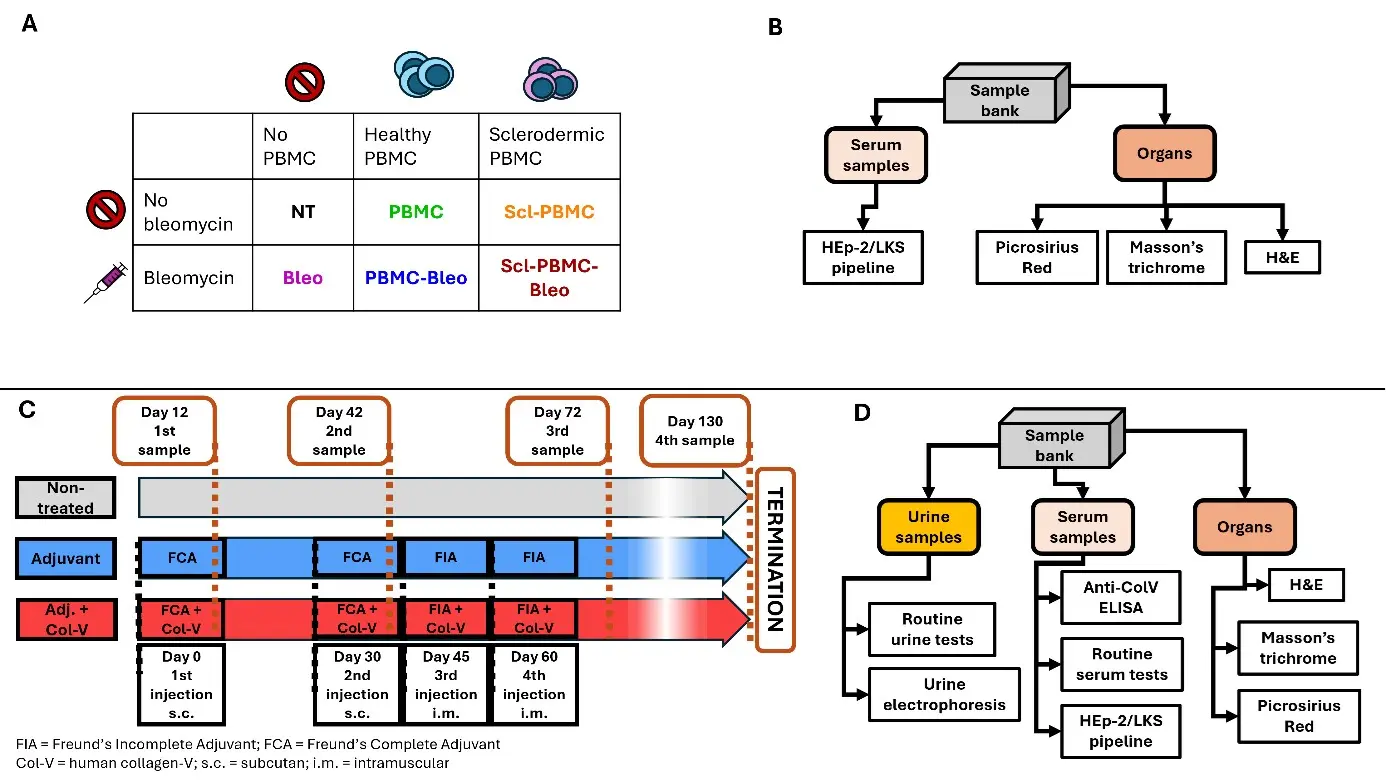 The research conducted by Lőrinc Nagy, Gábor Nagy, Tamás Juhász, Csaba Fillér, Gabriella Szűcs, Zoltán Szekanecz, György Vereb, Péter Antal-Szalmás, and Árpád Szöőr provides critical insights into the mechanisms underlying systemic sclerosis (SSc), an autoimmune disease characterized by fibrosis and immune dysregulation. This study compares two widely used experimental models of SSc: the bleomycin-induced fibrosis model and the collagen-V-induced autoimmune model. While the bleomycin model effectively simulates fibrotic processes, it lacks the immune component central to SSc. In contrast, the collagen-V model demonstrates strong antigen-specific immune activation but limited fibrosis.
The research conducted by Lőrinc Nagy, Gábor Nagy, Tamás Juhász, Csaba Fillér, Gabriella Szűcs, Zoltán Szekanecz, György Vereb, Péter Antal-Szalmás, and Árpád Szöőr provides critical insights into the mechanisms underlying systemic sclerosis (SSc), an autoimmune disease characterized by fibrosis and immune dysregulation. This study compares two widely used experimental models of SSc: the bleomycin-induced fibrosis model and the collagen-V-induced autoimmune model. While the bleomycin model effectively simulates fibrotic processes, it lacks the immune component central to SSc. In contrast, the collagen-V model demonstrates strong antigen-specific immune activation but limited fibrosis.
The study found that cardiac fibrosis was consistent in both models, emphasizing its significance in SSc pathology. The bleomycin model showed rapid fibrosis development, particularly in the heart, making it a suitable platform for testing antifibrotic therapies. However, fibrosis was inconsistent in other organs, such as the skin and lungs. The collagen-V model successfully triggered autoantibody production, reflecting immune activation but resulting in only localized fibrosis, predominantly in the heart. The findings suggest that combining these models or modifying experimental conditions - such as adjusting sex, age, or study duration - could enhance their translational relevance.
The research highlights the importance of selecting appropriate animal models when studying SSc and developing targeted therapies. Future studies could refine these models by integrating both fibrotic and immune-driven aspects of the disease, ultimately leading to improved treatment strategies.
DOI
Comparative Evaluation of Bleomycin- and Collagen-V-Induced Models of Systemic Sclerosis: Insights into Fibrosis and Autoimmunity for Translational Research
The research conducted by Lőrinc Nagy, Gábor Nagy, Tamás Juhász, Csaba Fillér, Gabriella Szűcs, Zoltán Szekanecz, György Vereb, Péter Antal-Szalmás, and Árpád Szöőr provides critical insights into the mechanisms underlying systemic sclerosis (SSc).
Last update:
2025. 04. 29. 16:02